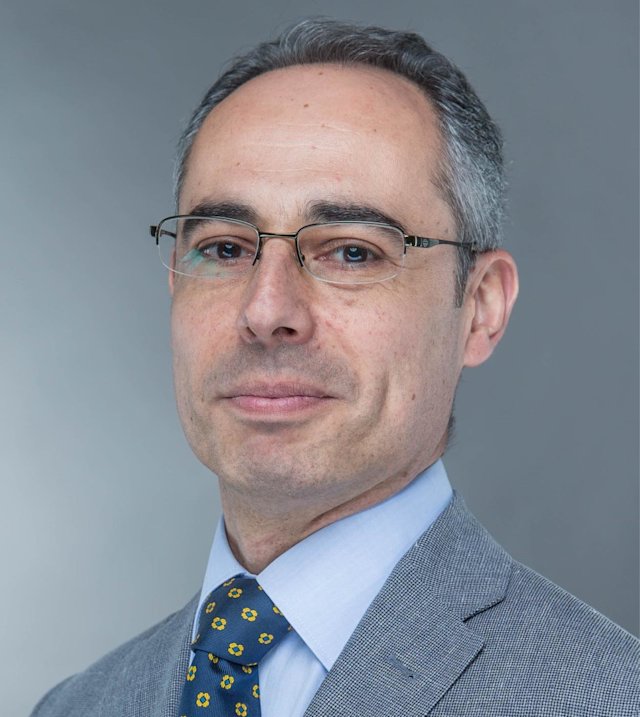Coronavirus (COVID-19) Updates
For the latest COVID-19 information and updates from Qatar Foundation, please visit our Statements page

QEERI’s Dr. Marcello Contestabile talks about pathways Qatar can use to create a road map to reach its aim of 25 percent reduction in GHG emissions by 2030
Today, governments are no longer questioning the reality of climate change as they might have been a decade ago. Most, if not all, are aware of its harrowing consequences, and while there is a growing level of ambition to tackle it, what is still missing in most cases is a concrete plan to mitigate it.
With energy use accounting for the majority of global greenhouse gas emissions, mitigating climate change requires transitioning to a more climate-friendly energy system, a process that is now long, and dangerously, overdue.
“To mitigate climate change, we need a major transformation of the global energy system – one that is unparalleled in its speed and scope,” said Dr. Marcello Contestabile, Principal Economist at Qatar Environment and Energy Institute (QEERI), part of Qatar Foundation’s (QF) Hamad Bin Khalifa University (HBKU).


Using the model, we can set a target for decarbonization, and then the model helps work out how to achieve that target and the most cost-effective technologies to invest in, taking into consideration all the relevant uncertainties
Energy systems consist of distinct but interlinked sectors such as power generation, transport, buildings, and industry. Achieving carbon emission reductions requires intervening on all these sectors simultaneously, while taking the complex nature of the system into due consideration to avoid unintended consequences.
To support a country in planning the transformation of its energy system, a vital tool is an energy systems model. Through a project awarded by QF’s Qatar National Research Fund (QNRF), Dr. Contestabile, in collaboration with Imperial College London, is currently working on developing Qatar’s first energy systems model, for the benefit of, and in collaboration with, stakeholders in government, industry, and research.
Energy systems models compute costs, fuel consumption, and emissions for each sector over time, and help identify optimal paths for reaching the desired policy targets through the transformation of the energy system, taking all relevant constraints into account.
A simple analogy would be to think of a person – in this case our existing energy system – with multiple illnesses going for a full health checkup. The checkup will identify the different illnesses the system suffers from. It will point out the most serious illness that needs to be treated first, along with a treatment plan that would have the highest rate of success while also being affordable.
The model will help identify the mix of technologies that can reduce emissions most effectively both in terms of quantity as well as cost effectiveness, and so on.
According to Dr. Contestabile, the model will help identify energy transition pathways that the country can then use to create a road map to reach its aim of 25 percent reduction in GHG emissions by 2030, and chart the course for further emissions reduction by 2050 and beyond.
“Using the model, we can set a target for decarbonization, and then the model helps work out how to achieve that target and the most cost-effective technologies to invest in, taking into consideration all the relevant uncertainties,” he said.
The main purpose of this project is to equip the State of Qatar with a tool to support policymaking and strategic planning concerning its energy, economic, and environmental policy goals. “The type of model we are developing is called TIMES,” Dr. Contestabile said. “It is the most used model worldwide and will allow us to equip Qatar with the same capabilities for performing energy systems analysis as leading governments and institutions around the world.”
Emphasizing the need for such a model to kickstart change, Professor Adam Hawkes, Director of the Sustainable Gas Institute and Professor of Energy Systems in the Department of Chemical Engineering at Imperial College London, said: “Qatar is in an enviable position to create an energy system and industrial sector that are aligned with Paris Agreement targets.
“The energy systems model we are building in this project is a tool for all stakeholders in Qatar to understand and ask questions of what that future could look like. It can give crucial information to policymakers and industry alike, enabling all to explore the impact of energy strategies for the future,” said Prof. Hawkes.
According to Dr. Contestabile, the value this project can bring to the country’s climate mitigations plans is significant, but it will depend heavily on the level of stakeholder engagement.


The energy systems model we are building in this project is a tool for all stakeholders in Qatar to understand and ask questions of what that future could look like
“The last thing we want to do is develop the model and then go to the stakeholders and present it to them. Rather we want the stakeholders to be involved from the beginning to make sure that, once developed, the model will be fit to be used to support the country’s policymaking process,” Dr. Contestabile said.
One of the project’s partners is Kahramaa. As part of their Tarsheed program, Kahramaa is coordinating the deployment of new technology such as solar photovoltaics and related energy storage capacity to manage intermittency, smart grids, electric vehicles, and related charging infrastructure, and more.
The model – once developed – with its ability to test different strategies to achieve policy targets will serve as an essential analytical tool in supporting Kahramaa maximize the benefits of deploying low-carbon technologies that are energy-efficient.

